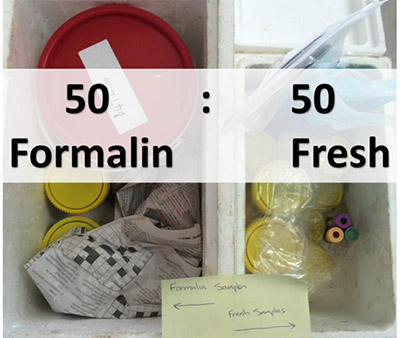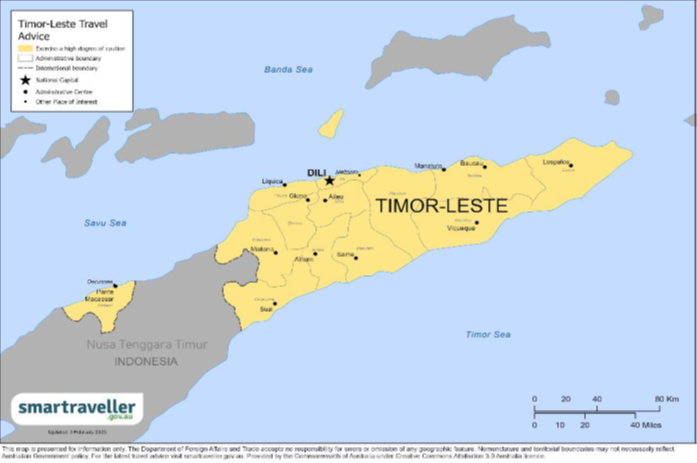Vet News NT: April 2024
Veterinary Board of the Northern Territory
Seeking applicants to join the Vet Board
We are currently seeking applicants to join the Vet Board and provide support and guidance for the veterinary profession in the Northern Territory (NT).
The board is responsible for the registration of veterinarians and veterinary specialists and administers the disciplinary provisions of the Act in respect of professional misconduct by registrants and the performance of prohibited practices by non-registered persons.
The board’s role is to protect the public and guide the veterinary profession. The board comprises a combination of veterinarians appointed by the minister, veterinarians elected by registered veterinarians via postal ballot, and a non-veterinarian appointed by the minister to represent the public interest.
The Vet Board meets six times a year. During these meetings, we deal with complaints received and spend considerable time and effort to proactively shape policies and guidelines that affect the way vets work in the NT. We hope to keep engaging with the profession, so together, we can uphold and improve veterinary standards in the NT.
Meetings are held during business hours at the Berrimah Farm Science Precinct. Meeting date and times are agreed upon by all members of the Board – we try our best to ensure everyone can make the meetings.
We are currently seeking nominations for an elected veterinarian to join the board. Election will be via postal vote by registered veterinarians.
If you wish to discuss this role further, please reach out via email vetboard@nt.gov.au
Submissions will close at the end of May.
Q Fever (Coxiella burnetti) in Veterinary Practice
Coxiella burnetti is a bacterium that is spread between infected animals and humans by direct or indirect contact. People are usually infected by inhaling the Q fever bacteria, but entry through broken skin is also possible, particularly if handling tissues and fluids of infected animals. The bacteria survives in the soil, dust and air for a significant period of time and can be spread by wind, so the necessity to be near animals is not required. A wide variety of animals, with cattle, sheep and goats being more commonly the source, but also cats, dogs and marsupials (kangaroos), can be infected and show no clinical signs.
Clinical practice may be an increased risk area for contracting Q fever particularly at times of parturition where the numbers of bacteria can be very high in an infected animal.
Q fever is more commonly diagnosed in people and then retrospectively an animal source may be identified as the source of the infection. Common presenting clinical signs in people are similar to a severe flu such as muscle and joint pain, fever, headaches, fatigue and chills. A very small number of people may develop chronic Q fever. Not everyone who is infected develops clinical disease.
If you are working in the veterinary industry and are over 15 years of age, talk with your health professional about a Q fever vaccination.
For further human health information go to the Northern Territory Government website
See the AVA policy document and discuss with your employer.
Read about the complexities of Q fever:
Sheep and Goat electronic (eID) tags
As of 1 January 2025, all sheep and goats in the Northern Territory will be required to have an accredited electronic identification tag (eID) applied to the centre of the right ear, facilitating traceability of any movements off the property through the National Livestock Identification System (NLIS).
This is to protect Australia’s livestock industry, and will assist in the event of an EAD outbreak, allowing us to trace individual animal movement.
Any property in the NT with any number of livestock, including sheep and/or goats, must have a Property Identification Code (PIC) registered to their property. As part of the eID rollout in 2024 and 2025, the NT government will be supplying subsidised eID tags and applicators to all PIC registered properties having sheep and/or goats.
Any properties with sheep and goats that do not have a PIC will be able to register (which is free) and will then be able to access the eID tags and applicators.
Advice and assistance for the application of eID tags will be provided to sheep and goat owners in the NT. Advice and assistance will also be provided to any veterinarians who may want it, should they be requested to apply the eID tag by their clients.

Tips for Livestock inspections
Who wants to be a Livestock Biosecurity Officer 2024? Please see some tips, if you go out to inspect livestock.
50:50 Rule
If in doubt of what to collect, get a piece of each major organ and put half into an individual, sterile 70mL screw top jar and half into formalin. The major organs are: liver, lung, kidney, spleen, heart and brain*. For the intestinal tract, the key sections are: stomach(s), duodenum and pancreas, jejunum and lymph node, ileocaecal junction and lymph node, and colon.
*When submitting brain, place just the front quarter into a 70mL jar and put the rest of the brain (hopefully with the entire hind brain and a piece of cervical spinal cord) into formalin!
Many important and common diseases may not leave obvious gross changes, and microscopic confirmation of the absence of abnormalities can assist in excluding certain conditions.
A pre-made TSE kit is a great guide on what to collect for any disease investigation and comes with the appropriate number of pre-labelled jars and a bucket for the formalin-fixed tissues.
Phone a friend
Prior to going out to a property for a disease investigation you can call the laboratory to discuss the case. We may provide unique insight and request specific samples. Another lifeline is taking someone with you to assist with a post mortem if possible - this person can take photographs, handle sample containers and bounce ideas around as to differential diagnoses.
Remember to provide appropriate personal protective equipment to people assisting you with a post mortem.
Ask the audience
Collecting a good history is vital for establishing differential diagnoses and determining risk. Consider your list of basic must-ask questions. You should determine: how many, over what timeframe, showing what signs, in what age/reproductive/paddock group(s) at a minimum.
It is also important to investigate if there have been any recent introductions, movements, management or changes which may have caused of exacerbated the issue.
Advertise your vacancies
Territory WorkerConnect comprehensive platform for employment opportunities in Australia’s Northern Territory connecting people with jobs that are available today.
Local businesses looking for new staff can also post job vacancies on this platform at no cost. This site is a service provided by the Northern Territory Government.
Our mission is to help local businesses and industries grow and attract new talent to the Northern Territory region locally, domestically and internationally.
Rabies update April 2024
Rabies is a lyssavirus spread by the bite of an infected mammal. While Australia, including the Northern Territory has Australian Bat Lyssavirus (ABLV) we do not currently have the Rabies Lyssavirus (RABV).
Rabies lyssavirus exists in North America and Europe in a sylvatic cycle but the rabies we are most concerned about exists in dog populations, with occasional cat, monkey and cattle infections, across Africa, the Middle East and Asia. As many people live, work or relax in close proximity to owned, free roaming or unowned dogs there is a chance of a spillover event in these areas from the maintenance host, the dog.
Islands have generally been relatively safe from the threat of rabies but with thousands of islands in the Asian region and a long history of trade it is not surprising that RABV has and is moving through the area.
Unfortunately RABV has been present in Nusa Tenggara Timur (NTT) for 12 months, the furthest east rabies has been detected in Indonesia. The cases in people and dogs are ongoing in challenging situations.
This year a human death has been reported and confirmed in the exclave of Timor-Leste, Oecusse. The boundary region between Oecusse and NTT is mountainous, underdeveloped and has unregulated movement of goods and people.
Timor-Leste is undertaking a large scale dog vaccination and socialisation program. This commenced with vaccinating all the people who would be delivering the vaccinations and has progressed to vaccinating dogs, cats and monkeys in Oecusse, Dili (capital and major port of Timor-Leste) and the land border regions adjacent to NTT. The aim is for 70% coverage to provide herd immunity.
In Northern Australia we have a long semi-regulated border between land and the sea. Traditional fishing and travel routes intersect with modern boundaries and we have also seen the arrival of asylum seekers in remote locations. It is not too hard to imagine that one day a dog may arrive with the people.
How prepared are we?
Would we recognise a potential rabid dog? In NTT rabies was not recognised until the first death of a person (not an uncommon scenario in new outbreaks).
Do we recommend that all dog bites should be immediately and vigorously washed with soap and water for 15 minutes, disinfected with alcohol or an iodine solution and then head straight to the health clinic to seek medical attention? (standard approach to possible rabies bites).
Do we monitor dog bite frequency? Are they increasing in number? Has the behaviour of the dogs changed? Do we consider rabies as a differential for behaviour change? When the owner states ‘but my dog never bites’ having just presented their dog for a dog fight?
Do not be alarmed but be aware, alert and prepared.
NABSnet
In March, the NABSnet Masterclass 2024 was held in Darwin at the Novotel CBD. It was a great weekend of networking and knowledge sharing with 53 veterinarians, pathologists and other biosecurity experts from across northern Australia attending to discuss skin diseases in cattle and getting the most out of disease investigations. Special thanks to the Berrimah Veterinary Laboratory team, Vicki Simlesa and Anne Walters for sharing your expert local knowledge and to the territory veterinarians who made the trip to attend and contribute your experiences.
NABSnet (the Northern Australia Biosecurity Surveillance Network) is a network of over fifty veterinarians who service northern Australia across the Northern Territory, Western Australia and Queensland. The project was established in 2016 to enhance the early detection of exotic disease incursions and provide sufficient surveillance information to underpin proof of freedom from trade-sensitive diseases in northern Australia.
NABSnet veterinarians have access to subsidies, resources and support to investigate livestock disease events in the north and the annual NABSnet Masterclass is organised and hosted by each jurisdiction on a rotational basis. Next year, the masterclass will be held in Queensland, with more details to come.
If you would like more information on NABSnet, please contact the NABSnet NT coordinator, Jane Giliam, on 08 8999 2123.
Contact us
Veterinary Board registrar
Phone: 08 8999 2028
Fax: 08 8999 2089
First floor John England Building
Berrimah Farm
Makagon Road
Berrimah NT 0828
GPO Box 3000
Darwin NT 0801
Give feedback about this page.
Share this page:
URL copied!


